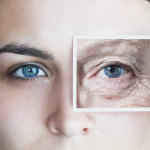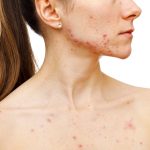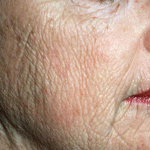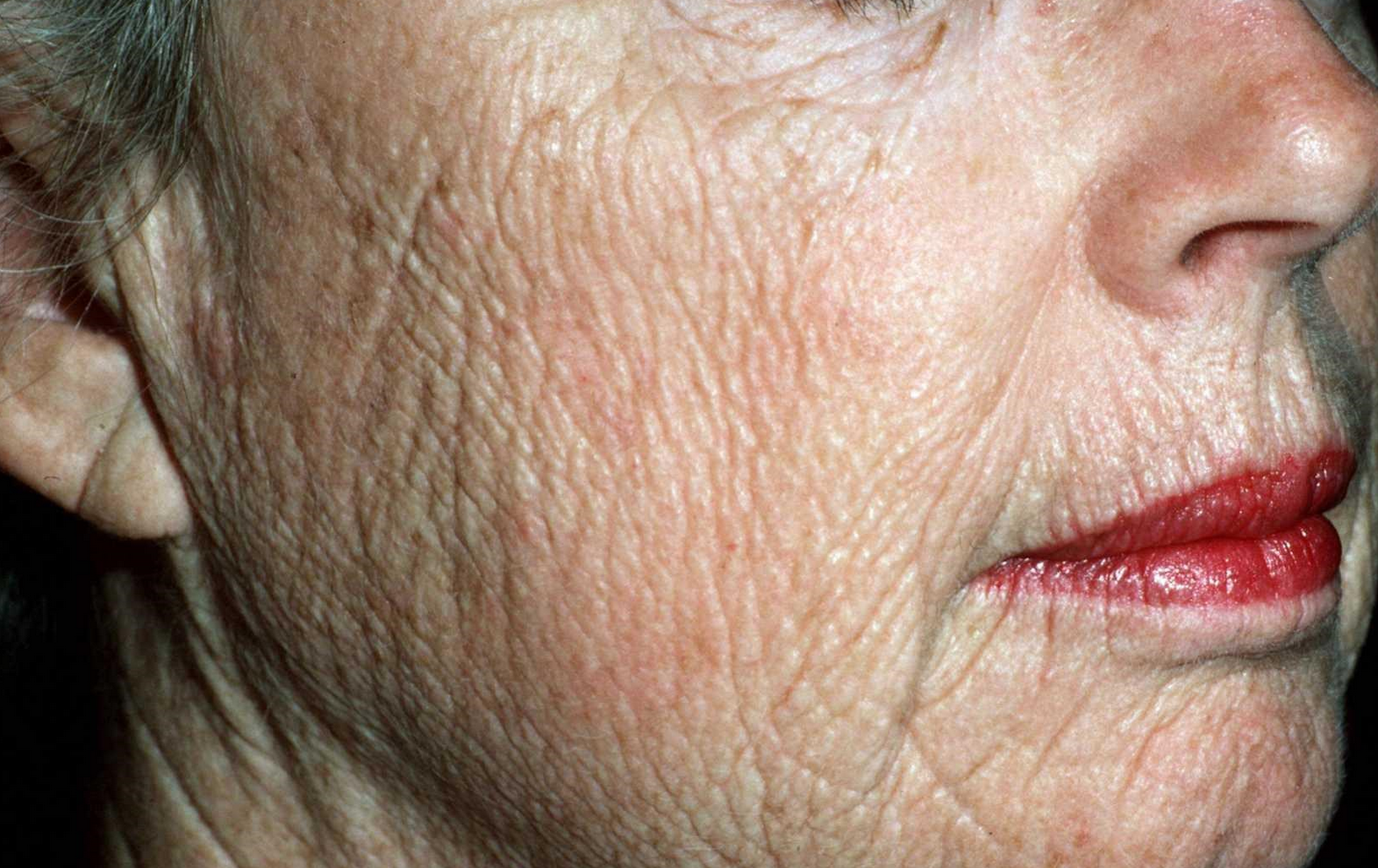Solar elastosis, also known as elastosis cutis or actinic elastosis, is a common skin condition caused by prolonged exposure to the sun’s ultraviolet (UV) rays. As a dermatologist, it’s crucial to educate patients about this condition and provide effective strategies for prevention and treatment.
What is Solar Elastosis?
Solar elastosis is characterized by the degeneration of elastin fibers in the skin, resulting in thickened, yellowish, and leathery skin texture. Elastin is a protein in the skin responsible for its elasticity and firmness. With repeated sun exposure, UV rays damage elastin fibers, leading to the accumulation of abnormal elastin material and the formation of wrinkles, sagging skin, and a rough texture.
How Do You Get Solar Elastosis?
Sun exposure is the primary cause of solar elastosis. Prolonged exposure to UV radiation from sunlight, especially without adequate protection, damages the skin’s elastin fibers over time. People who spend a lot of time outdoors, such as outdoor workers, athletes, and sunbathers, are particularly at risk.
Additionally, individuals with fair skin, light eyes, and a history of frequent sunburns are more prone to developing solar elastosis. This condition tends to manifest in areas of the body that receive the most sun exposure, such as the face, neck, arms, and hands.
Best Practices to Avoid Solar Elastosis
Prevention is key when it comes to solar elastosis. Dermatologists recommend the following best practices to minimize the risk of developing this condition:
- Sun Protection: Wear broad-spectrum sunscreen with SPF 30 or higher daily, even on cloudy days. Reapply every two hours, especially after swimming or sweating. Use protective clothing, wide-brimmed hats, and sunglasses to shield your skin from UV rays.
- Seek Shade: Limit your time in the sun, especially between 10 a.m. and 4 p.m. when UV rays are strongest. Seek shade under trees, umbrellas, or awnings when outdoors.
- Protective Clothing: Wear long-sleeved shirts, pants, and UV-blocking clothing whenever possible. Lightweight and breathable fabrics with a tight weave offer better protection.
- Avoid Tanning Beds: UV radiation from tanning beds can also contribute to solar elastosis and increase the risk of skin cancer. Avoid indoor tanning altogether.
- Regular Skin Checks: Perform self-examinations of your skin regularly and schedule annual skin cancer screenings with a dermatologist.
Other Issues Associated with Solar Elastosis
Solar elastosis is not just a cosmetic concern; it can also lead to other skin problems and health issues:
- Skin Cancer: Prolonged sun exposure and solar elastosis increase the risk of developing skin cancer, including basal cell carcinoma, squamous cell carcinoma, and melanoma.
- Premature Aging: Solar elastosis accelerates the aging process of the skin, leading to the premature appearance of wrinkles, fine lines, and sagging skin.
- Actinic Keratosis: This precancerous skin condition characterized by rough, scaly patches is often found in sun-exposed areas and is associated with solar elastosis.
Treatment of Solar Elastosis
While prevention is ideal, there are treatments available to address existing solar elastosis:
- Topical Treatments: Prescription-strength retinoids or alpha hydroxy acids may help improve the appearance of sun-damaged skin by promoting cell turnover and collagen production.
- Laser Therapy: Various laser treatments, such as fractional laser resurfacing or intense pulsed light (IPL) therapy, can target and improve the appearance of solar elastosis by stimulating collagen production and removing damaged skin cells.
- Chemical Peels: Chemical peels containing alpha hydroxy acids or trichloroacetic acid (TCA) can help exfoliate the outer layer of skin, reducing the appearance of sun damage and improving skin texture.
- Surgical Procedures: In some cases, surgical procedures such as dermabrasion or skin excision may be necessary to remove severely damaged skin areas.
Conclusion
Solar elastosis is a common skin condition caused by sun damage that affects the skin’s elasticity and appearance. As a dermatologist, it’s essential to educate patients about the importance of sun protection and offer effective treatments to address existing damage. By adopting sun-safe practices and seeking professional care when needed, individuals can minimize the risk of solar elastosis and maintain healthy, youthful-looking skin for years to come.










